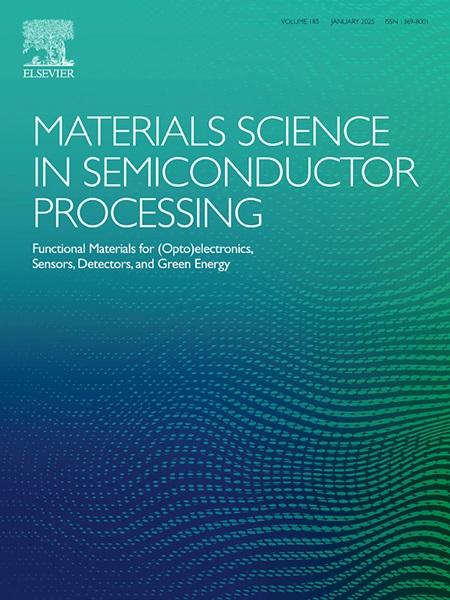Nanoconfinement of magnesium hydride in porous scaffolds for hydrogen storage: Kinetics, thermodynamics, and future prospects
IF 4.2
3区 工程技术
Q2 ENGINEERING, ELECTRICAL & ELECTRONIC
引用次数: 0
Abstract
Hydrogen shows great promise as a versatile energy carrier for various clean energy applications; however, it remains challenging to develop an efficient and safe storage system. Hydrogen must be stored in chemical materials like ammonia borane (NH3BH3) and sodium borohydride (NaBH4) or metal hydride materials for proper use. Among the frequently reported hydrides, magnesium hydride (MgH2) gained significant consideration as a highly prospective material for energy storage applications. Nevertheless, the hands-on use of MgH2 is restricted by its high thermodynamic barriers and slow kinetics. Therefore, nanoconfinement of MgH2 in porous materials has appeared as a promising strategy to enhance its kinetics and thermodynamic performance. This review paper summarizes the present research on how nanoconfinement influences the kinetics and thermodynamics of MgH2 during the hydrogen adsorption/desorption process within different porous scaffolds. The review also highlights the challenges associated with the nanoconfinement approach, including the need for a fundamental understanding of the nanoconfinement effects and the development of materials with enhanced stability and cycling performance. Finally, future research directions that could lead to high storage capacity at ambient conditions based on nanoconfined MgH2 were explained. Based on the study findings, the most promising scaffolds are carbon-based materials due to their high surface area, tunable pore structures, lightweight nature, and excellent thermal and chemical stability. Hopefully, this article will serve as an eye-opening point for prospective studies in hydrogen storage using MgH2 through confinement in porous scaffolds.

多孔储氢支架中氢化镁的纳米约束:动力学、热力学和未来展望
氢作为各种清洁能源应用的通用能源载体显示出巨大的前景;然而,开发一种高效、安全的存储系统仍然是一个挑战。氢必须储存在化学材料中,如氨硼烷(NH3BH3)和硼氢化钠(NaBH4)或金属氢化物材料中,以便正确使用。在经常报道的氢化物中,氢化镁(MgH2)作为一种极具前景的储能材料得到了广泛的关注。然而,MgH2的实际使用受到其高热力学障碍和慢动力学的限制。因此,多孔材料中MgH2的纳米限制已成为提高其动力学和热力学性能的一种有前途的策略。本文综述了纳米约束对MgH2在不同多孔支架内的氢吸附/解吸过程动力学和热力学的影响。这篇综述还强调了与纳米约束方法相关的挑战,包括对纳米约束效应的基本理解和开发具有增强稳定性和循环性能的材料的必要性。最后,展望了基于纳米受限MgH2的环境条件下高存储容量的未来研究方向。基于研究结果,最有前途的支架材料是碳基材料,因为它们具有高表面积、可调节的孔隙结构、轻量化以及优异的热稳定性和化学稳定性。希望这篇文章能够为MgH2在多孔支架中的约束储氢的前瞻性研究提供一个开眼点。
本文章由计算机程序翻译,如有差异,请以英文原文为准。
求助全文
约1分钟内获得全文
求助全文
来源期刊

Materials Science in Semiconductor Processing
工程技术-材料科学:综合
CiteScore
8.00
自引率
4.90%
发文量
780
审稿时长
42 days
期刊介绍:
Materials Science in Semiconductor Processing provides a unique forum for the discussion of novel processing, applications and theoretical studies of functional materials and devices for (opto)electronics, sensors, detectors, biotechnology and green energy.
Each issue will aim to provide a snapshot of current insights, new achievements, breakthroughs and future trends in such diverse fields as microelectronics, energy conversion and storage, communications, biotechnology, (photo)catalysis, nano- and thin-film technology, hybrid and composite materials, chemical processing, vapor-phase deposition, device fabrication, and modelling, which are the backbone of advanced semiconductor processing and applications.
Coverage will include: advanced lithography for submicron devices; etching and related topics; ion implantation; damage evolution and related issues; plasma and thermal CVD; rapid thermal processing; advanced metallization and interconnect schemes; thin dielectric layers, oxidation; sol-gel processing; chemical bath and (electro)chemical deposition; compound semiconductor processing; new non-oxide materials and their applications; (macro)molecular and hybrid materials; molecular dynamics, ab-initio methods, Monte Carlo, etc.; new materials and processes for discrete and integrated circuits; magnetic materials and spintronics; heterostructures and quantum devices; engineering of the electrical and optical properties of semiconductors; crystal growth mechanisms; reliability, defect density, intrinsic impurities and defects.
 求助内容:
求助内容: 应助结果提醒方式:
应助结果提醒方式:


